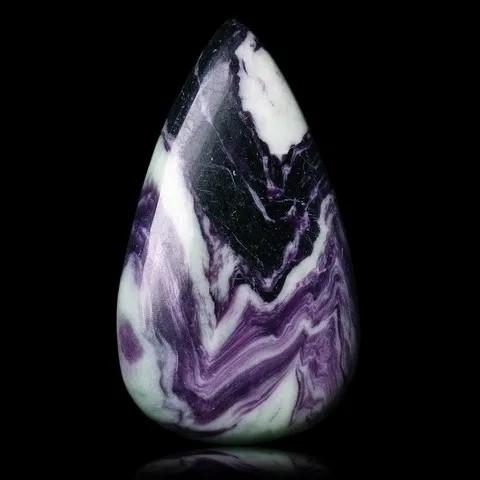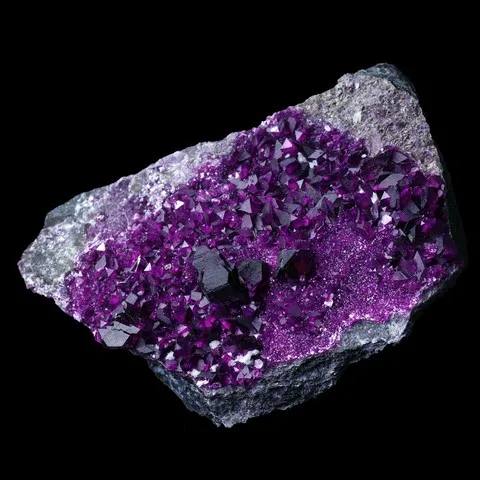KÄMMERERITE
Class : Silicates
Subclass : Phyllosilicates
Crystal system : Monoclinic
Chemistry : Mg5(Al,Cr)2Si3O10(OH)8
Rarity : Very rare
Kämmererite is a superb variety of clinochlore, whose sumptuous pink-red to purplish-red color is due to the presence of chromium. Remember that clinochlor is the most widespread mineral of the group of chlorites, common phyllosilicates of magnesium, iron, aluminium, etc... It is the magnesian term of the group, which constitutes a series with the ferriferous term : chamosite. Its name was given in honor of A. A. Kämmerer, mine manager in Russia. It is found in chromite deposits, especially those associated with serpentinized dunites. Kämmererite occurs in small, stocky crystals of pseudohexagonal to pseudorhombohedral appearance. It is a rare mineral appreciated by collectors which, when massive, can constitute interesting ornamental materials for the cutting of cabochons and carved objects.
Main photo : Kämmererite de Kop Krom Mine, Turkey
Kämmererite in the World

Kämmererite in France
Kämmererite is reported in certain serpentinized peridotites from Auvergne near Azerat (Haute-Loire) and Champagnat-le-Jeune (Puy-de-Dôme).
Twinning
No twin reported for this mineral species.
Fakes and treatments
No fake inventories for this mineral species.
Hardness : 2 to 2.5
Density : 2.64
Fracture : Scaly
Trace : White to pink
TP : Translucent to transparent
RI : 1.571 to 1.599
Birefringence : 0.005 to 0.011
Optical character : Biaxial +
Pleochroism : Visible
Fluorescence : None
Solubility : Sulfuric acid
Magnetism : None
Radioactivity : None

